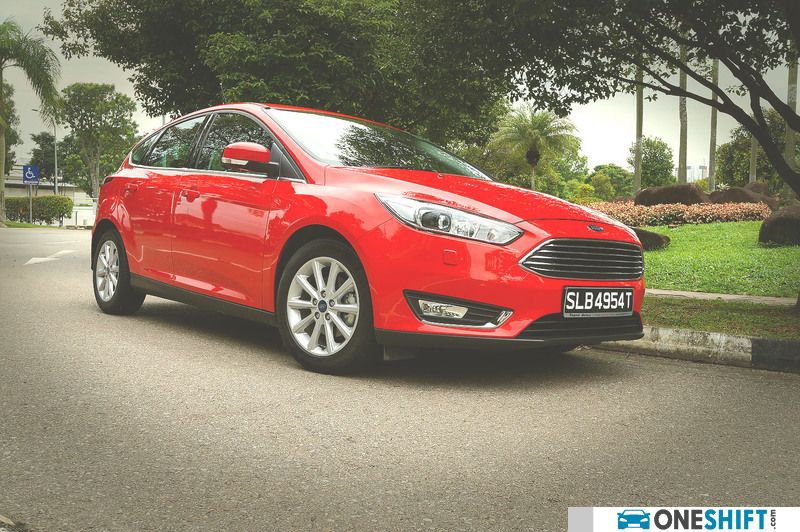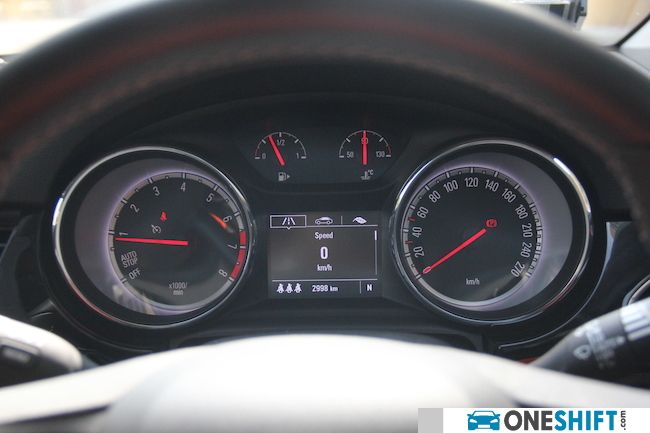Four Minus One Equals More
Hatchbacks are pretty cool cars to have around. They give the carry the impression of a youthful, fun-loving driver, who loves a sporty drive. There are those who’d look to buying a hot hatch, like a more premium Golf GTI, or a raw pocket rocket of a Swift Sport. Then there are those who would want all of that, without breaking the bank, or their backs.


Hatchbacks are pretty cool cars to have around. They carry the impression of a youthful, fun-loving owner, who loves a sporty drive.
There are those who’d look to buying a hot hatch, like a more premium Golf GTI, or a raw pocket rocket of a Swift Sport.
Then there are those who would want all of that, without breaking the bank, or their backs.


We recently tested two hatches which were built with quality, and fuel efficiency, and also the driver in-mind.
With right-sized engines to meet higher levels of fuel efficiency, while providing excellent power delivery, the Ford Focus 1.0 Ecoboost and Opel Astra 1.0 Easytronic, both have 1.0 engines, 3 cylinders, a small turbocharger, and deliver their drive through the front wheels.
While both cars are this similar, and target the same market segment, yet again, they are quite different on how they deliver the goods.

The Focus carries the fame of its more powerful RS sibling, and who could forget the absolutely mental 2.5 litre 5-cyl turbocharged Volvo engine that Ford once shoehorned into its predecessor?

Back to the right-sized Focus, a more frugal 1.0 power plant pushing out 123bhp, and 170Nm of torque at a very low 1,400rpm sits in the engine bay. The baby focus gets its drive through a well-developed 6-speed automatic transmission. It is a pity though, that the blue oval people decided to place a rocker switch for you to manually switch cogs on the gearshift lever, using your thumb to do up and downshifts.
The Astra carries the same spec, but with only 103bhp coming from their 3-cyl. Torque is identical to the Ford, but comes in later at 1,800rpm. Power delivery to the wheels comes from a unique automated manual transmission, similar to the Alfa Romeo Selespeed. While the Ford has 6 cogs to play with, the Astra makes do with 5. It would however, take a while to get used to the way the gears do their shifting, where between first to second, there would be a bit of a pause before power comes in. Lifting your foot off the throttle between first and second smoothens the ride a little.
While the Ford offers a more fluid ride with the automatic, we cannot deny that the Astra is more fun delivering the drive with a disguised manual transmission. If any of you out there missed out on owning an Alfa Romeo in the last decade, this might be a milder ‘it’.


Styling-wise, the Astra takes the cake with the very well placed lines and pinches on the sheet metal. The front grille of the focus features a trapezoidal, slightly angry look, with a frowning bonnet to match. The Astra on the other hand has an evil grin, featuring beautifully-styled headlamps.
Both cars feature integrated rear wings with a high-mount third brake light. While the rear windshield of the Focus sits neatly in-place, with sheet metal surrounding it, Opel’s design approach was more of providing a wrap-around feel, with the impression of the windshield meeting with the windows of the rear doors. Look again, and there are subtle buttresses built into the rear windshield sculpting, which according to Opel, slightly improves aerodynamics.
Tail lamps on the Focus wrap forward, almost halfway over the rear wheel, giving a sense of continuity. Opel on the other hand, designed theirs stretching inward, giving an impression of width.
But where the strongest virtues of both cars lie, are rather quite different. The Ford prides itself with more power and more useful torque, just slightly down the rev counter, the Opel on the other hand has more space. The 2,662 wheelbase gives a slight “in-between wheels” advantage over the Ford, and it shows. Bootspace on the Opel is a good 370 litres, while the Ford is a whopping 46 litres less. Knowing this, you can bet that you will be having baggage spill over onto the rear seats when driving the Ford.


Rear legroom for both cars do also reflect the slight wheelbase advantage that the Astra has. With all 172 cm of me, fitting in without my knees touching the front seats, add another 172cm of me in the front, and there is sufficient space still for minor forward-backward front seat adjustments. The Focus, on the other hand, comes across as tight in the rear.
In the most practical context, picture yourself installing a child seat, and you’d know that the Astra is the clear winner here.
Behind the driver’s seat, Ford has greatly improved on their dashboard design. The once confusing set of buttons, are now replaced with a neater and conventional-looking unit. Materials are high in quality, and fit and finish are excellent. The Astra on the other hand, mates piano black surfaces, thick bits of metal and plastic, producing one of the nicest dashes we have come across in a compact car. The only fault we have with it, are the bits of GM switchgear that the car carries. Spongy turn signal stalks and all.
Driving the Focus, would reveal very accurate steering, with good road feedback. The Opel, isn’t too far behind, but the nippy Ford, with more power and with torque reaching the wheels earlier down the revs, makes it such a treat to drive. The 6-speed transmission shifts smoothly enough, making easy work of cornering and the like.


The Astra on the other hand wants you to work for it, with you manually shifting the car, by bobbing the shift leaver forward and backward to get the best ratios from the 5-speed automated manual. The experience is rewarding, when going round the twisty bits.
While there are other more mainstream cars in Singapore with around the same price tag, one cannot deny that these two cars would stand out from the crowd. But which car is really better overall? While the Ford has its virtues, especially handling-wise, the Astra does take the cake. The amount of real cabin and boot space would really matter in reality, especially since most buyers doing their sums, would in this segment want a car that is practical; no matter how unique they may want it to be.
The Astra did after all win 2016 Car of the Year in Europe.

Credits:

- Convenient and Hassle-Free
- Consumer Protection
Transparent Process
With No Obligation


Get the Best Price for your used car
from 500+ dealers in 24 hours








